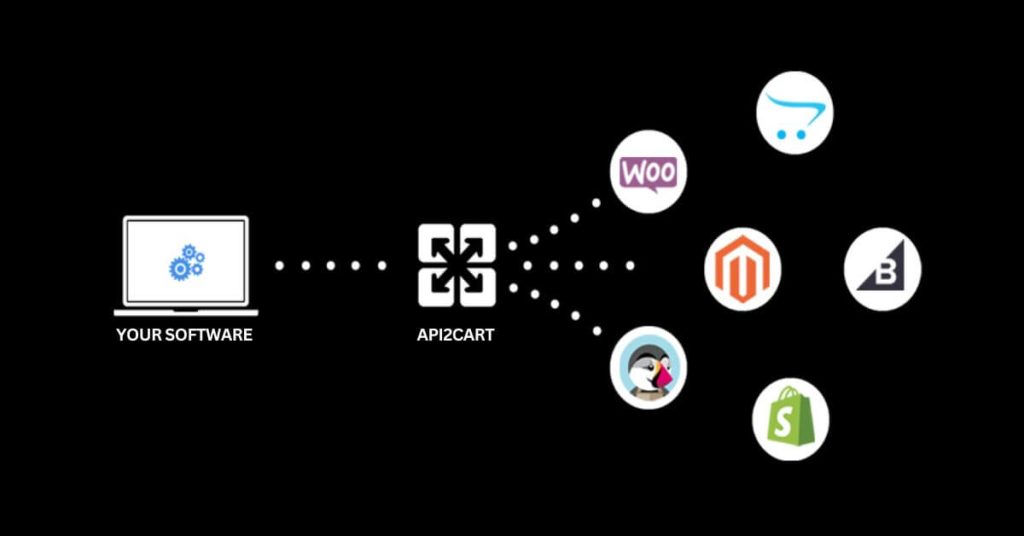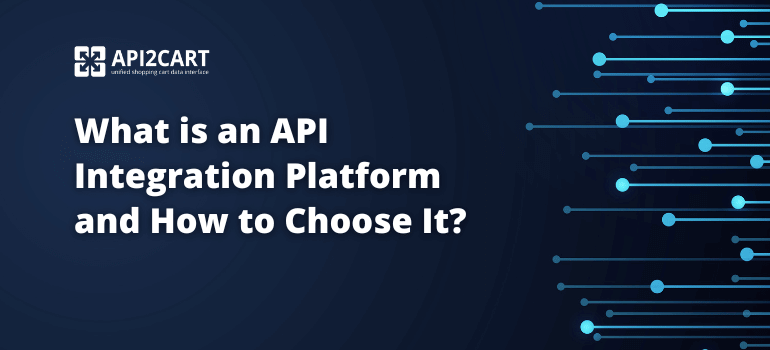
Are you looking to connect to Magento 2 API? In this blog post, we will show you how to develop the integration with the Magento 2 API easily. We will also show you some of the benefits of using the Magento 2 API.
For software and app providers operating in the eCommerce market, developing a Magento 2 API integration is a must. Magento 2 is one of the most popular shopping cart software in the world, with thousands of e-merchants from the United States, United Kingdom, Germany, Netherlands, and Brazil having chosen it as their platform of choice for building their online stores.
Magento 2 is the world's most successful and widely used eСommerce platform. As a software vendor, connecting your system with Magento 2 can have a great positive effect on all of your software business. It allows your software system to access and manage all the data from Magento 2 online stores.
API Meaning
An application programming interface, or API, is a key component of modern software development. An API serves as a way for various software programs to communicate with each other, allowing them all to work effectively.
Through an API, different pieces of software can share data, exchange messages, or perform specific tasks together. The API allows all of these processes to happen seamlessly and efficiently, enabling programmers to create complex applications that utilize the power and features of multiple programs at once.
Whether you are developing your own software or using someone else's API tools, understanding the importance and value of this crucial interface is essential for success in today's digital landscape.
Magento 2 API
Magento 2 API is an essential part of Magento's architecture, as it provides powerful tools for developers to access and modify core features of the Magento 2 system. By definition, an API is a set of functions and procedures that allow software applications to communicate with each other. In the context of Magento 2, the API acts as an intermediary between web services and external software applications, facilitating communication between the two systems. This makes it an essential tool for integrators and developers looking to build custom solutions on the Magento 2 platform. Whether you are creating custom extensions for Magento 2 or developing a standalone application that needs to connect with Magento's database, Magento 2 API will provide everything you need to get the job done.
Magento 2 supports three types of APIs: Representational State Transfer (REST) – which uses the HTTP protocol to send and receive user requests; Simple Object Access Protocol (SOAP) – which generates WSDL files as per user requests; GraphQL – a frontend alternative to REST and SOAP web APIs.
Magento 2 Integration
Magento 2 integration is a crucial process for developers and software businesses that rely on eCommerce platforms in order to operate effectively. By enabling seamless connections between Magento 2 and other apps or software, Magento 2 integration creates a streamlined workflow that allows businesses to more easily manage data and deliver services to Magento 2 e-merchants.
For example, Magento eCommerce API integration can be extremely valuable for software like warehouse management systems, which need access to large amounts of product and order data in order to manage inventory levels effectively. By allowing these systems to interact with Magento 2 platform, Magento 2 integration facilitates the efficient transfer of important information and ensures that no key data is lost in the process. Ultimately, this helps businesses achieve greater accuracy and efficiency in all aspects of their operations. So if you're looking for ways to streamline your business processes and expand your customer base, Magento 2 is a great place to start.
How to Use a Unified API for Magento 2 Platform Integration
When it comes to developing the connection between different eCommerce software or apps and Magento 2, there is perhaps a no better option than API2Cart. With this unified API for Magento 2 integration and for integration with the other popular eCommerce platforms and marketplaces. API2Cart also supports the integration with Shopify, WooCommerce, Wix, Amazon, eBay, Etsy, Walmart, etc.
Using API2Cart, you can use dozens of different API methods to work with Magento 2 online store data. For example, you will get access to products, orders, prices, customer details, and other data. You will be able to update, modify, add, delete and sync such data easily and fast.
Through the Magento 2 integration development process via API2Cart, you can not only improve your software functionality but also ensure a seamless and efficient workflow for your business.
API2Cart API methods enable various app and software providers to do the following business operations:
- Import Magento 2 data on orders, products, prices, categories, etc.
- Synchronize inventory levels easily
- Update Magento 2 order details automatically with no difficulties
- Create shipments to the orders and generate shipping labels
- Update Magento 2 price data easily
- Organize Magento 2 data in detailed reports

For instance, if your software needs to get orders with all the details from Magento 2 software, you can use order.list API method provided by API2Cart.
API2Cart provides detailed API documentation and has 24/7 technical support. Moreover, you can try the service for free for 30-days.
Using API2Cart you will be able to save your company money, time, and other resources needed to develop a reliable Magento 2 API integration.
If you need more info on how exactly API2Cart works and how it can help your solution to integrate with 40+ eCommerce platforms, contact our managers right now. We are ready to answer all your questions 24/7.
Also, you can register your free API2Cart account and connect to Magento 2 API easily and fast.



